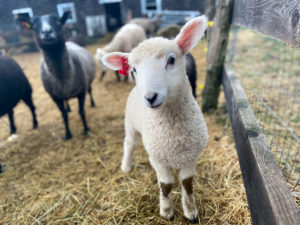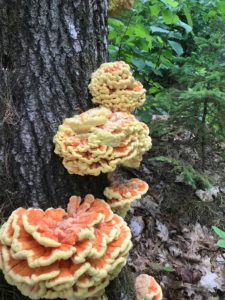by Hilary Crowell, Assistant Farm Manager
Usually about now some people start to ask me, as a farmer, what I do. I sense that it is a bit of mystery that there is work to do when the ground is frozen and days are short. This is actually a really exciting time to be a farmer because it is this time of year when planning for the upcoming season starts. The day that Megan and I scheduled to start garden planning the 2015 seed catalogues arrived. Yay! Oh the potential that lies in those pages! The folks at Johnny’s and Fedco know just how to get a farmer geared up for the next growing season with their enticing written descriptions and jaw dropping photos. I go first for Johnny’s to get a fix of pictures of vegetables. Once I’ve feasted my eyes on the newest varieties of tomatoes, basil, eggplant, and winter squash I flip to Fedco for their crafty, often funny descriptions and incredible hand drawn illustrations. By the time I’ve finished garden planning there’s newsprint ink smeared on my fingers and computer keys from flipping through the Fedco catalog. Looking at both catalogues is one of the many times throughout my job when I feel there is a true art in farming.
In case I’ve lost you on the road of ‘farming is art’ let’s take a turn down a different road. It turns out that Excel is an incredibly useful tool to facilitate the art of farming. At Chewonki, when we think about how the gardens will look for the upcoming year we start with a big picture plan. We have created master spreadsheet for our entire acreage in cultivation outlining a four year rotation. This plan ensures that each garden will get a solid mix of all crop families plus a year of fallow time.
With the big picture in place we moved on to next year’s plan. Knowing roughly what was going where we figured out the spacing layout for each garden – we always plant in either beds or rows and the spacing between each is different. With that spacing figured out it was detail time: what exactly will go in each bed and in each row and how many and when do the seeds need to be started and when do they need to be planted and when (roughly) will they be harvested? This is when I made decisions about what varieties we’ll plant. Using the seed catalogs and notes from our meeting with the kitchen I filled in a crop plan spreadsheet that indicates the seeding date, variety name, days until harvest, transplant date, succession number, bed feet, row feet, rows per bed, in row feet between plants, number of plants to start, and the garden where the crop will go. For example, when I was thinking about our pepper crop for next year I considered decided to keep most of last year’s varieties and added a purple variety because the kitchen asked for more colored peppers. Last year the plants were pretty big by the time we planted but I think that was to our advantage so I kept the start date the same. Next, I considered how many of each plant we want. We are planting six varieties of peppers with a mostly even distribution of variety. The exceptions are New Ace and Jimmy Nardellos. I decided to plant a few extra New Ace because they are a good producer and less of Jimmy Nardellos because they are a new variety for us. When I plan the number of plants to start I always like to add a buffer of 10 percent. When I go to seed I always check the germination rate and if it is lower than 90 percent I’ll add a few extra to the buffer to be safe. I’d much rather have extra plants than not enough. All of this information is then mapped out on our individual garden maps (another spreadsheet!) and translated into a seed order.

Our crop plan spreadsheet contains a ton of information and we’ve found it is handy to have all of those details in one place when things get hectic. Plus, having a record of how we made decisions and what we planned is helpful months later when we are planting and a year later when it is time to order seeds again. Of course, populating an Excel spreadsheet and populating an agricultural field are two very different things. And what you plan in the winter drinking a cup of tea gazing out the window can be very different from what actually happens in the throes of summer. But, nonetheless, a plan is important to have so we can keep a close eye on what works and doesn’t work and continue to build our understanding of this land’s personality and quirks.












